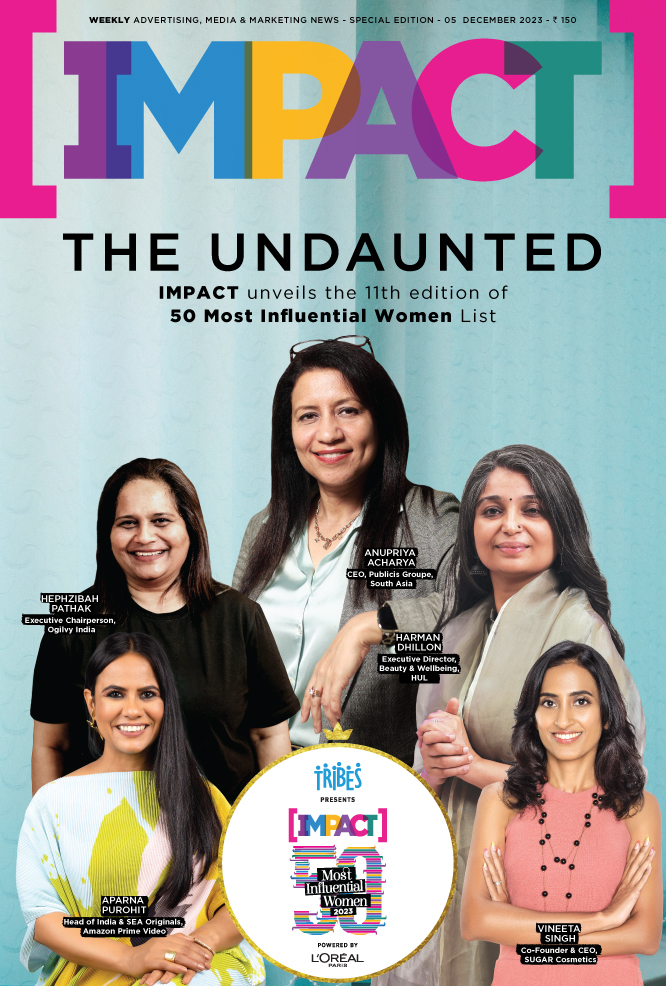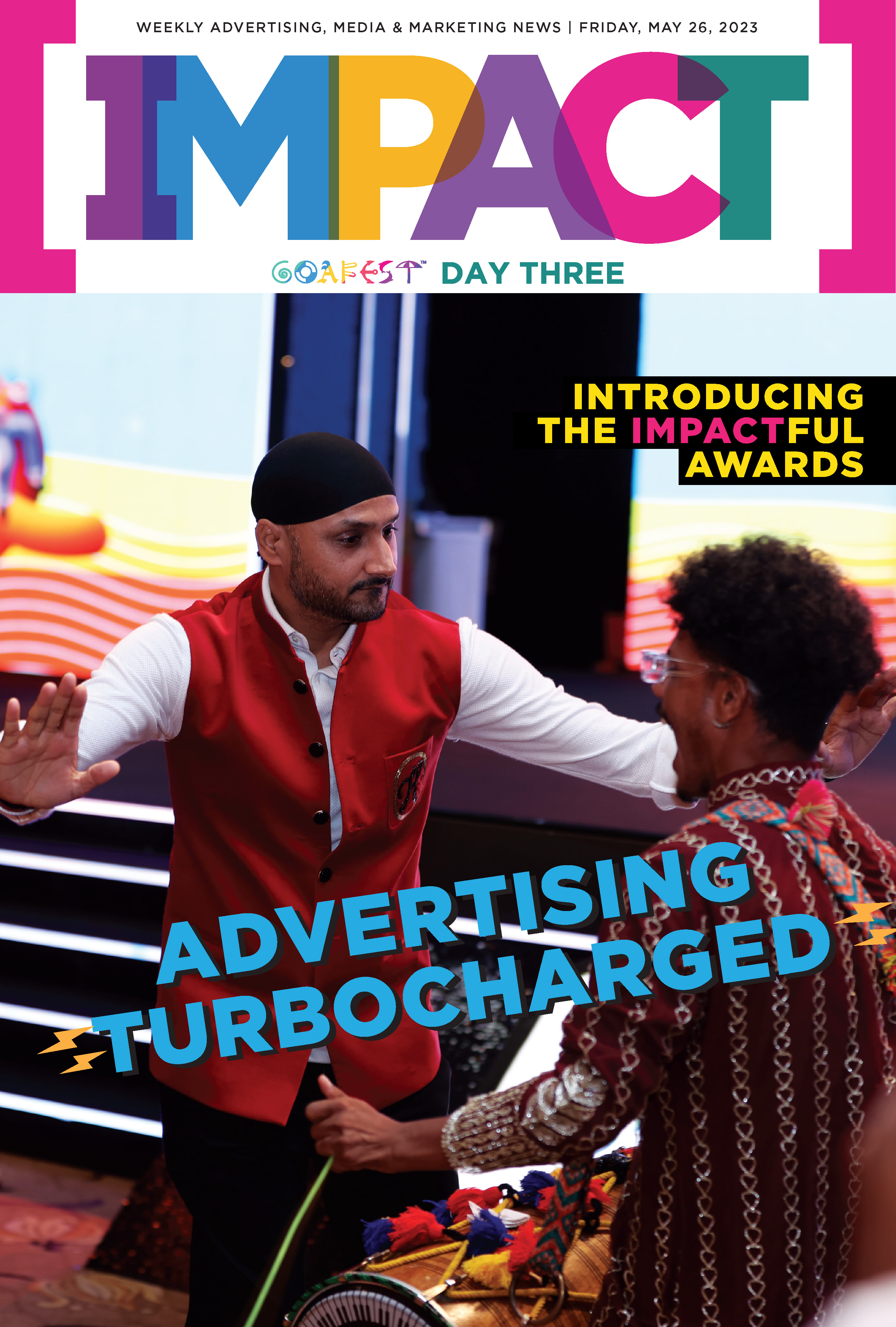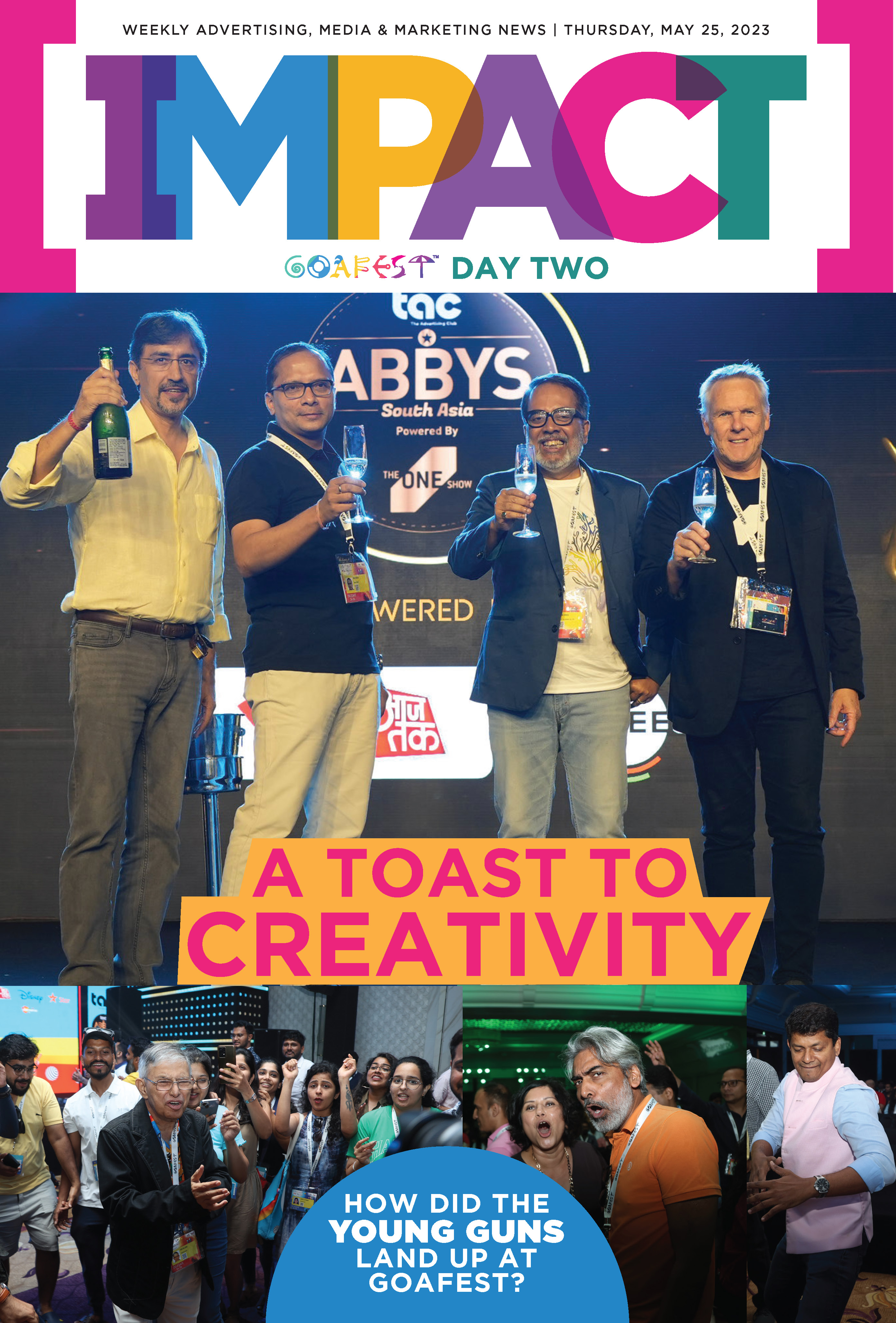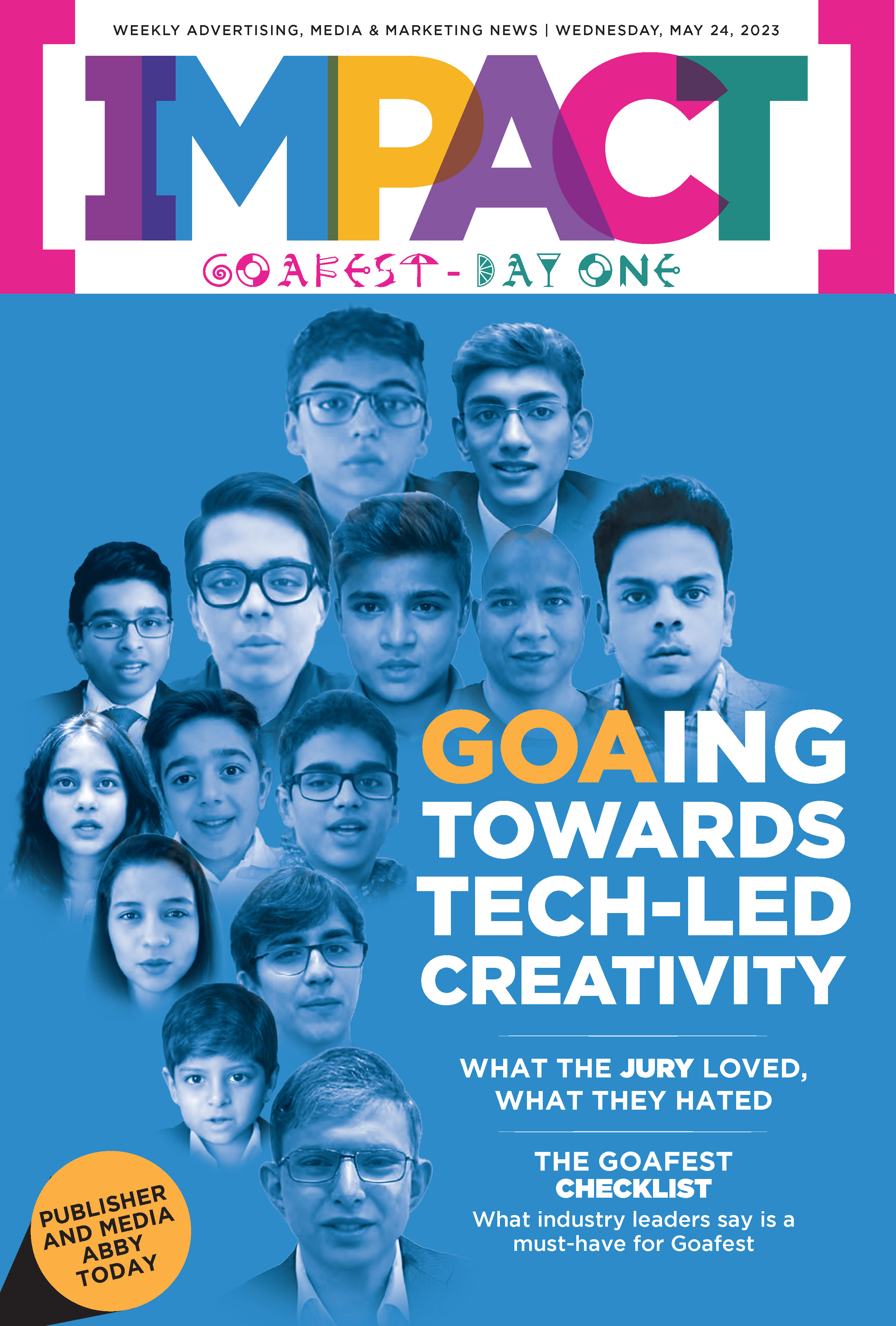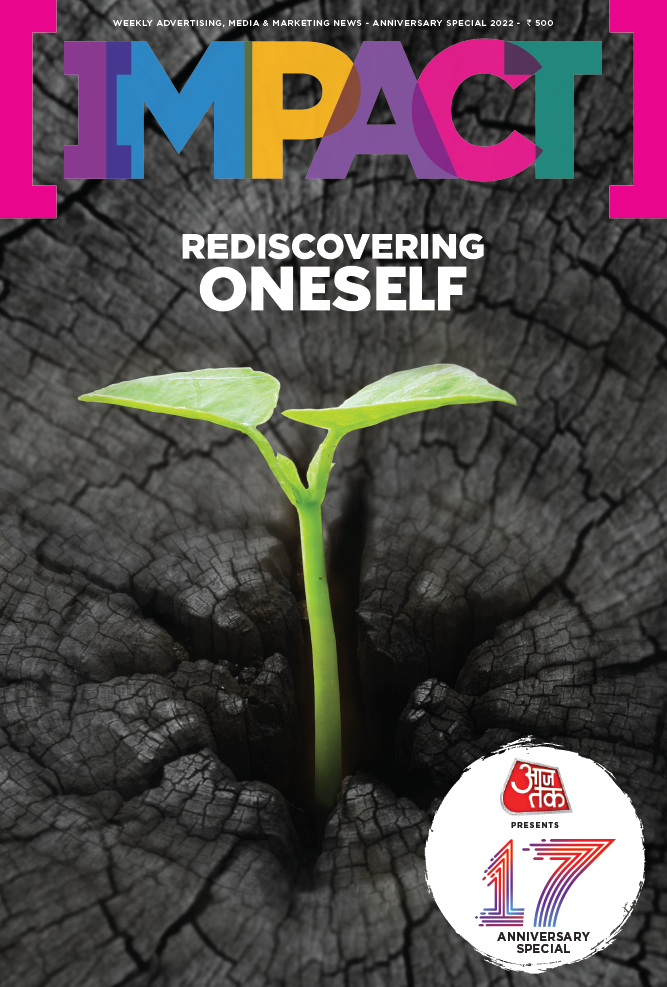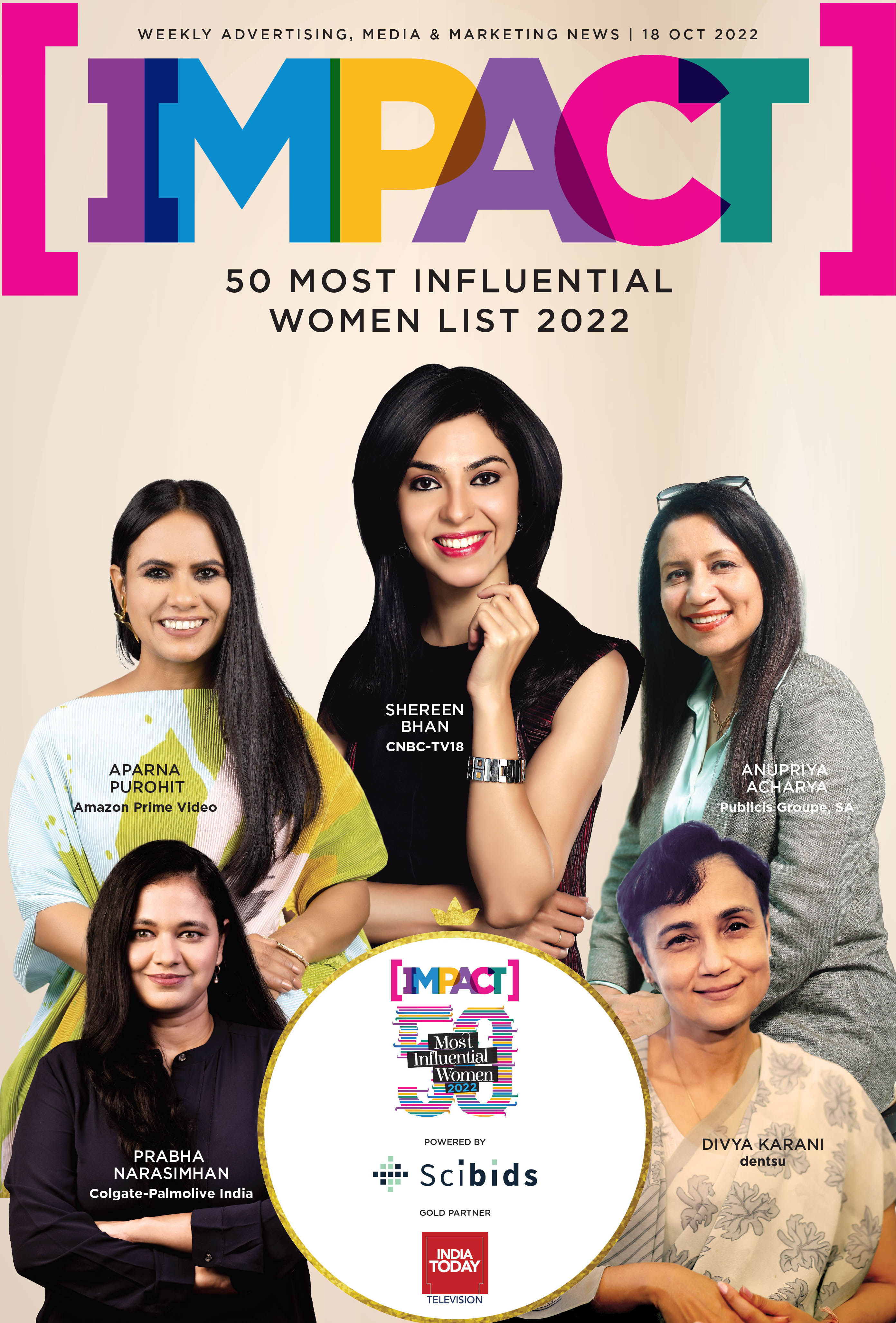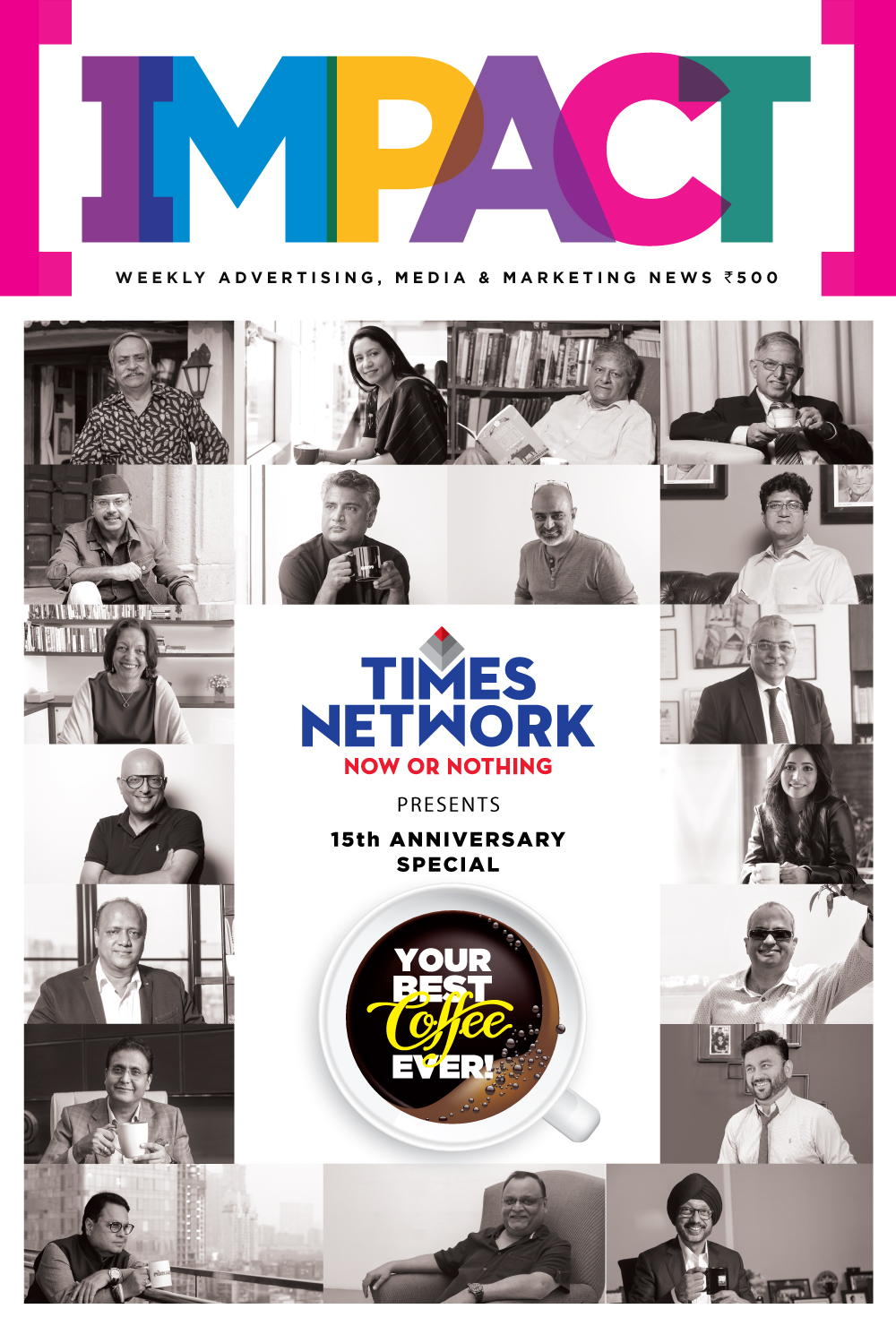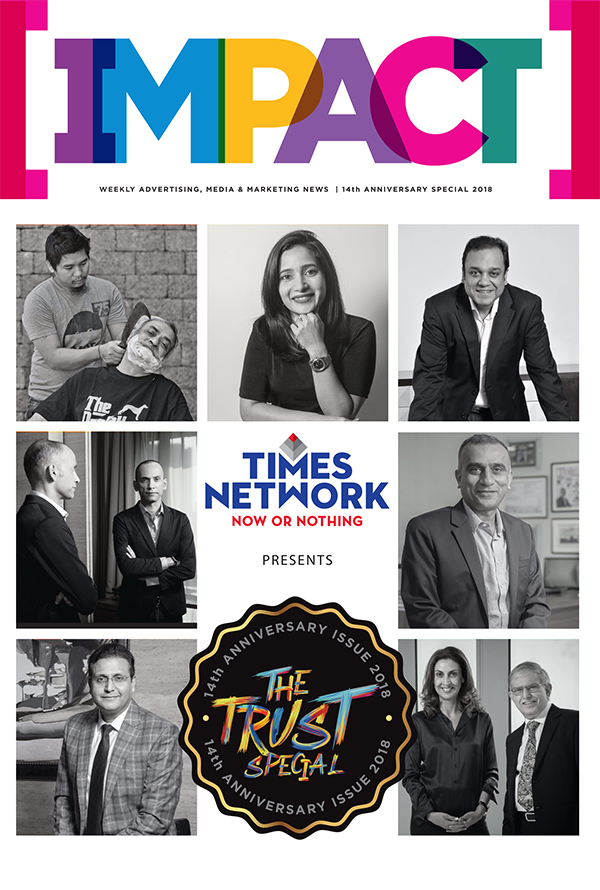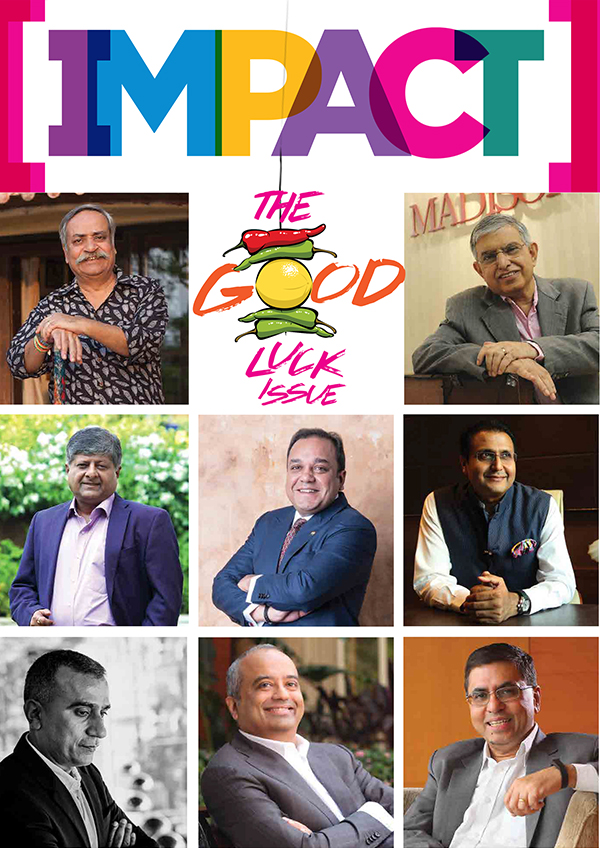In July 2025, the third season of Squid Game smashed global viewership records—cementing once again that Korean storytelling isn’t just entertainment, it’s marketing gold. From gochujang burgers to K-beauty routines, the Hallyu wave is no longer riding the fringes. It’s front and centre in Indian brand strategy.
Over the past year alone, Korean culture has reshaped how Indian companies launch, advertise, and engage. Whether it’s social-first campaigns with K-pop idols, influencer-led skincare routines, or having a K-Pop idol appear on the Kapil Sharma Show, the branding playbook is being rewritten—with a Korea influenced Indian audience in mind. This isn’t mere fandom. It’s consumer intent.
Today, two of the world’s biggest music acts—BTS and Blackpink—are Korean. Even Priyanka Chopra Jonas recently admitted that her daughter’s favourite song is “APT APT” featuring Rosé and Bruno Mars. From kimchi to Kim Taehyung, Korea has become the cultural keyword of the decade. And Indian brands are no longer sitting on the sidelines.
When Bingo! dropped its ‘Maeun Maeun’ spicy chip campaign featuring K-pop star Aoora, it didn’t just sell snacks—it sold cool. And it’s no longer a one-off gimmick either. India Inc. is tapping into the Korean wave—Hallyu—as a full-fledged strategy. “Indian brands are eager to embrace the Hallyu phenomenon because it taps into a generation that values global influences, meaningful connections and experience-driven storytelling,” says Konark Gaur, CMO, Pilgrim.
“Indian brands are eager to embrace the Hallyu phenomenon because it taps into a generation that values global influences, meaningful connections and experience-driven storytelling,” says Konark Gaur, CMO, Pilgrim.
While India’s first viral encounter with Korea may have been Psy’s ‘Gangnam Style’ back in 2013, it’s in the last five years that Hallyu has become serious marketing currency. K-pop has invaded our playlists, K-dramas dominate OTT watchlists, and Korean aesthetics become part of mainstream marketing playbooks. What we’re witnessing is more than a trend—it’s a template. And Indian brands are taking notes. “The K-wave trend started gaining attention in 2019 but took off during the pandemic,” says Seshu Kumar, Chief Buying and Merchandising Officer at bigbasket. “People became curious about Korean food and culture… and everyone stayed home watching K-dramas or listening to K-pop,” he adds. The result? A 370% YoY spike in K-drama viewership in India on platforms like Netflix and Viki, and a 162% jump in Korean noodle imports—laying the foundation for marketing teams to turn cultural curiosity into commercial strategy. These were more than just cultural cues—they were consumer behaviour signals that marketers could no longer ignore.
And Indian brands are taking notes. “The K-wave trend started gaining attention in 2019 but took off during the pandemic,” says Seshu Kumar, Chief Buying and Merchandising Officer at bigbasket. “People became curious about Korean food and culture… and everyone stayed home watching K-dramas or listening to K-pop,” he adds. The result? A 370% YoY spike in K-drama viewership in India on platforms like Netflix and Viki, and a 162% jump in Korean noodle imports—laying the foundation for marketing teams to turn cultural curiosity into commercial strategy. These were more than just cultural cues—they were consumer behaviour signals that marketers could no longer ignore.

 CJ ENM, a South Korean entertainment company known for producing and distributing movies, television dramas, and music, too is making an entry in India via Prime Video and Amazon MX Player. “OTT platforms have revolutionised access to K-content,” says Nandini Singh, Brand Strategy Consultant, CJ ENM. “With personalised recommendations based on genre, age, and viewing habits, these platforms have effectively connected younger Indian audiences with high-quality Korean dramas and shows.” This shift in content discovery has translated directly into brand opportunity. As Korean content became binge-worthy and hyper-relatable, it didn’t just stay on screen—it spilled into product shelves, fashion aisles, and shopping carts.
CJ ENM, a South Korean entertainment company known for producing and distributing movies, television dramas, and music, too is making an entry in India via Prime Video and Amazon MX Player. “OTT platforms have revolutionised access to K-content,” says Nandini Singh, Brand Strategy Consultant, CJ ENM. “With personalised recommendations based on genre, age, and viewing habits, these platforms have effectively connected younger Indian audiences with high-quality Korean dramas and shows.” This shift in content discovery has translated directly into brand opportunity. As Korean content became binge-worthy and hyper-relatable, it didn’t just stay on screen—it spilled into product shelves, fashion aisles, and shopping carts.
Marketing teams began to see K-content not just as entertainment, but as a springboard for brand storytelling, influencer tie-ins, and co-branded campaigns.

Slurrping up the Ramen Revolution
One of the most visible manifestations of the Korean wave has been the explosion of Korean ramen in the Indian market. According to a NeilsenIQ report, the sales of Korean ramen in India skyrocketed from a mere `2 crore in 2021 to over `65 crore in 2023! Reflecting a 400% YoY growth. In fact, a report by Chosun Daily, a Korean newspaper, stated that India consumes 8.7 billion units of Korean Ramen annually! Korean ramen exports to India rose from about $3.7 million in 2019 to $11.28 million in 2023, with Korean processed food exports reaching about $4.1 billion in 2024—up 14.9% year-on-year.
The Korean Economic Daily, also reported that as of March 2024, Korea’s processed food exports to India stood at $1.25 billion for ramen and $492 million for snacks. The share of processed food among Korean exports to India has also risen from 19.89% in 2023 to 24.63% in 2025. When even the local Kirana stores had started stocking Korean Samyang Spicy Noodles on their shelves, even Maggi, one of the market leaders, was pushed to release its own range of Korean BBQ Veg/Non Veg Noodles. This isn’t just a food fad—it’s a signal to marketers that Korean culture has become deeply embedded in Indian consumption habits.
 “Korean culture shares a lot of similarities with India. This, combined with the popularity of K-pop and K-dramas, has made it a focus for many brands,” says Vikas Chawla, Co-Founder, Social Beat. “FMCG brands are getting on this bandwagon because Indians genuinely enjoy bold, spicy flavours inspired by Korea. This is a growing segment and is now fully mainstream—not just online, but in everyday shopping baskets,” he adds.
“Korean culture shares a lot of similarities with India. This, combined with the popularity of K-pop and K-dramas, has made it a focus for many brands,” says Vikas Chawla, Co-Founder, Social Beat. “FMCG brands are getting on this bandwagon because Indians genuinely enjoy bold, spicy flavours inspired by Korea. This is a growing segment and is now fully mainstream—not just online, but in everyday shopping baskets,” he adds. Homegrown players like MasterChow, have been quick to act on this insight. “When we launched the K-chow Ramen, we created a Korean masala—blending Korean chilli with Indian spice familiarity,” says Vidur Kataria, Founder & Director at MasterChow. “We’re building bridges between cultures through flavour,” he adds.
Homegrown players like MasterChow, have been quick to act on this insight. “When we launched the K-chow Ramen, we created a Korean masala—blending Korean chilli with Indian spice familiarity,” says Vidur Kataria, Founder & Director at MasterChow. “We’re building bridges between cultures through flavour,” he adds.

 But it’s not just about spice. It’s about storytelling and identity. “Our decision to launch the Knorr Korean Ramen range was driven by consumer demand for Korean experiences,” says Priyanka Ganguly, Head of Foods & Food Services, Hindustan Unilever Ltd. “We focused on striking a balance between authenticity and adaptability.”
But it’s not just about spice. It’s about storytelling and identity. “Our decision to launch the Knorr Korean Ramen range was driven by consumer demand for Korean experiences,” says Priyanka Ganguly, Head of Foods & Food Services, Hindustan Unilever Ltd. “We focused on striking a balance between authenticity and adaptability.”
Burger King’s Korean Spicy Fest, McDonald’s Korean McSpicy Range, and Knorr’s ‘Dare to Slurp’ campaign show how brands are betting on Korea not just as flavour—but as full sensory brand worlds. “We believe our Korean range is a bold, flavourful way for fans to enjoy Korea—right here at McDonald’s India,” says Arvind R.P., CMO, McDonald’s India (W&S).
“We believe our Korean range is a bold, flavourful way for fans to enjoy Korea—right here at McDonald’s India,” says Arvind R.P., CMO, McDonald’s India (W&S).

Authenticity vs Adaptation: What Sells? As Indian brands and global players ride the Korean wave, a crucial question surfaces: do consumers crave authentic Korean experiences or localised twists tailored for Indian preferences? The answer, it seems, is both—but depends on the category and the consumer. “We’ve observed a strong preference for authentic Korean brands like Samyang and Nongshim,” notes Devendra Meel, Chief Business Officer, Zepto. “Knorr and Maggi’s versions are growing, but they’re still catching up in terms of traction.”
As Indian brands and global players ride the Korean wave, a crucial question surfaces: do consumers crave authentic Korean experiences or localised twists tailored for Indian preferences? The answer, it seems, is both—but depends on the category and the consumer. “We’ve observed a strong preference for authentic Korean brands like Samyang and Nongshim,” notes Devendra Meel, Chief Business Officer, Zepto. “Knorr and Maggi’s versions are growing, but they’re still catching up in terms of traction.”
Meanwhile, Korean ramen giants are building India-specific growth strategies, Nongshim is clocking 63% annual growth and aims for over $7 million in sales from India alone. Ottogi started exporting vegetarian ramen to suit local preferences. Samyang is now on Reliance Hypermarket shelves and targets $10 million+ in sales from India. These aren’t just import plays—they’re localised marketing bets on Indian taste evolution.

K-Beauty Boom: Glass Skin Goes Mainstream
After ramen and K-pop playlists, the next frontier of Korean influence in India is the bathroom shelf. What began as a niche skincare curiosity has evolved into a billion-dollar aspiration—fuelled by visuals of ‘glass skin,’ minimalist branding, and celebrity-led desirability.
“Indians are increasingly drawn to the luminous ‘glass skin’ ideal,” says Gaur, adding that, “It represents health, glow, and authenticity.”
Brands like Pilgrim, Quench, Axis-Y, COSRX, and Innisfree are not only driving product growth but also reimagining beauty advertising.

 Instagram influencers like Piyusha Patil (aka Piyuchino) are at the centre of this revolution. “K-beauty isn’t just functional—it’s transformative,” she says.
Instagram influencers like Piyusha Patil (aka Piyuchino) are at the centre of this revolution. “K-beauty isn’t just functional—it’s transformative,” she says.
 “When fans see their favourite K-star use a product, it instantly builds desire,” adds Patil. And platforms like Zepto have become unexpected distribution powerhouses. “We saw early on that Korean cuisine and skincare were rising in tandem,” says Divya Sreenivas, VP & Business Head – Luxury, Zepto. “That’s why we’ve expanded our Korean brand listings substantially.”
“When fans see their favourite K-star use a product, it instantly builds desire,” adds Patil. And platforms like Zepto have become unexpected distribution powerhouses. “We saw early on that Korean cuisine and skincare were rising in tandem,” says Divya Sreenivas, VP & Business Head – Luxury, Zepto. “That’s why we’ve expanded our Korean brand listings substantially.”
A Statista report now forecasts India’s K-beauty market to hit $1.3 billion by 2032.

Content is the New Collab:  K-dramas aren’t just entertainment—they’re becoming ad platforms. Netflix’s Season 2 and 3 of Squid Game have led to marketing integrations with various mainstream brands like Instamart, Knorr, Five Star, and even Duolingo. “Our ‘Learn Korean or Else’ campaign blended our brand’s quirky tone with Squid Game’s tension,” says Karandeep Singh Kapany, Regional Marketing Director, Duolingo. “We saw a 40% spike in Korean learners after Season 1. This partnership was a cultural moment,” he adds.
K-dramas aren’t just entertainment—they’re becoming ad platforms. Netflix’s Season 2 and 3 of Squid Game have led to marketing integrations with various mainstream brands like Instamart, Knorr, Five Star, and even Duolingo. “Our ‘Learn Korean or Else’ campaign blended our brand’s quirky tone with Squid Game’s tension,” says Karandeep Singh Kapany, Regional Marketing Director, Duolingo. “We saw a 40% spike in Korean learners after Season 1. This partnership was a cultural moment,” he adds.
Netflix itself is embracing its role as a brand platform. A Netflix India spokesperson says, “The influence of Korean pop culture, particularly through Netflix’s slate of K-dramas and global hits like Crash Landing on You, When Life Gives You Tangerines, Squid Game, and most recently KPop Demon Hunters, which is already winning hearts here, has inspired brands to explore innovative approaches to consumer engagement.” As Korean content like Squid Game becomes both cultural currency and a marketing canvas, brands are increasingly looking to insert themselves into these moments with strategic precision.

 But how do such integrations happen? “Agencies like ours are constantly scouting cultural moments to build campaigns around,” says Arvind Pillai, Director – Influencer Marketing & Content, Madison World. “From co-branded content to themed product launches, the goal is to align brand messaging with virality,” adds Pillai. And when content becomes the campaign, the next logical step is letting the fans—and their idols—carry it forward.
But how do such integrations happen? “Agencies like ours are constantly scouting cultural moments to build campaigns around,” says Arvind Pillai, Director – Influencer Marketing & Content, Madison World. “From co-branded content to themed product launches, the goal is to align brand messaging with virality,” adds Pillai. And when content becomes the campaign, the next logical step is letting the fans—and their idols—carry it forward.

From Fandom to Advertising Fuel
The year 2025 marked a turning point: K-pop fandom officially became marketing fuel in India.
K-pop idol Jackson Wang’s appearance on The Kapil Sharma Show—as part of a collaboration with Diljit Dosanjh—wasn’t just a headline moment; it was a carefully calibrated cross-cultural campaign. Around the same time, South Korean actress Chae Soo-bin starred in Crocs’ new ad alongside Bollywood actor Siddhant Chaturvedi, and Aoora’s Instagram feed turned into a blend of Tamil hits and K-dance.In the past year, globally acclaimed idols like EXO members Suho and Chen, SISTA’s Hyolyn and many more performed at K-pop concerts in Delhi and Mumbai.
“These are not just concerts—they’re brand signals,” says Nandini Singh, “K-pop stars are bridging cultural gaps and generating unmatched attention.” Leveraging this fandom was Tonic Worldwide’s strategy behind onboarding fan-favourite idol and ex-Bigg Boss contestant Aoora. “Aoora’s deep connection with Indian fans gave the campaign authenticity,” says Sudish Balan, Co-Founder & Chief Creative Officer, Tonic Worldwide.
Leveraging this fandom was Tonic Worldwide’s strategy behind onboarding fan-favourite idol and ex-Bigg Boss contestant Aoora. “Aoora’s deep connection with Indian fans gave the campaign authenticity,” says Sudish Balan, Co-Founder & Chief Creative Officer, Tonic Worldwide.

Instagram Is the New Ad Agency
The Korean wave may have started on screens, but it found its real traction in the scroll. From food hauls to skincare routines, it’s on Instagram and YouTube that Korean culture gets translated, localised, and shopped in real-time.
For Gen Z and Millennials, social media isn’t just for watching—it’s where discovery, validation, and purchase decisions happen simultaneously.
The Korean wave is also redefining the way products are conceptualised and marketed in India. It’s about creating an emotional narrative around products, integrating the artistry and storytelling synonymous with Korean culture.
Brands are also leveraging social media and influencer marketing to reach their target audience. “Social media has been at the core of our marketing strategy for Knorr Korean Ramen, especially for connecting with Gen Zs and millennials,” says Ganguly. “’Our ‘Dare to Slurp’ campaign was designed to be 100% social-first, with platforms like Instagram and YouTube driving the narrative and engagement.”
Influencers, particularly those who are part of the K-pop and K-drama fan communities, are playing a crucial role in these campaigns. Infact, some Korean influencers in India, like Lee Yeechan have partnered with brands such as Amazon mini TV, Make My Trip, ITC to drive Gen Z views.

The Future of K-Marketing in India
Is this a trend or a tectonic shift? Most marketers believe it’s the latter.
“The Korean wave is no longer just entertainment—it’s influencing what people eat, how they dress, even how they express themselves,” says Seshu Kumar. “The Korean influence in India is far more enduring than a passing fad,” adds Arvind Pillai. Whether it’s glass skin or gochujang, K-pop or K-dramas, Indian marketers are no longer asking if they should ride the Korean wave. The question now is how creatively can they surf it next?


















